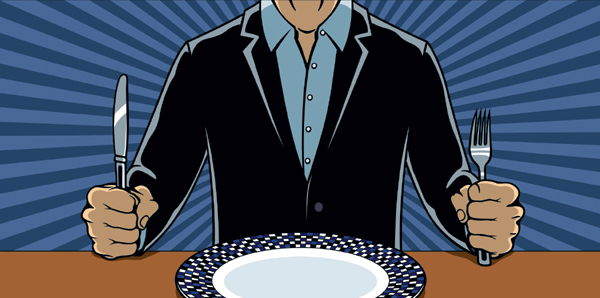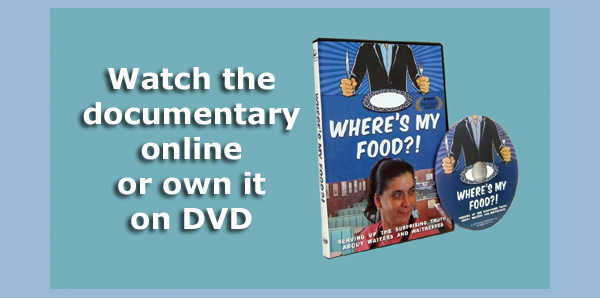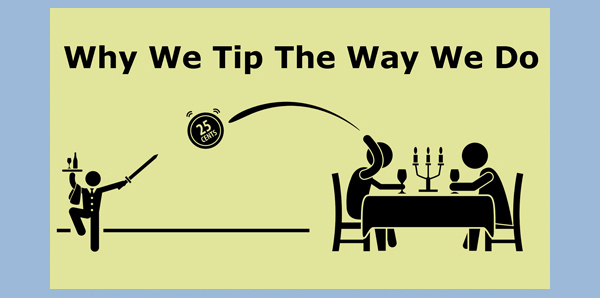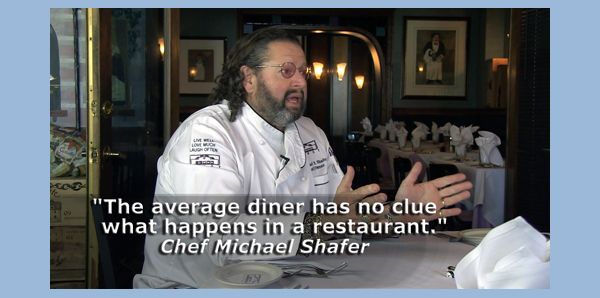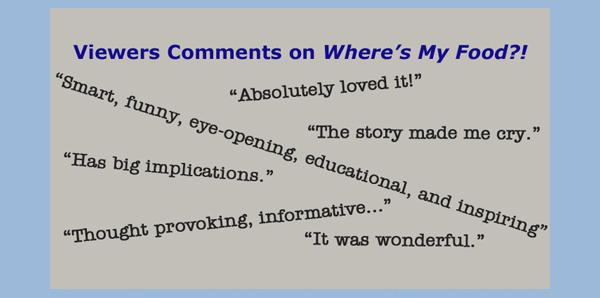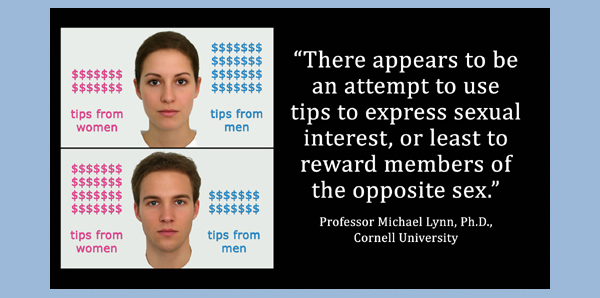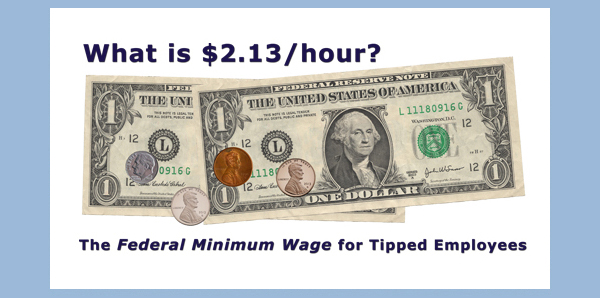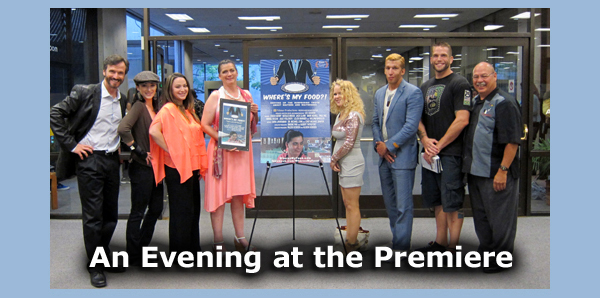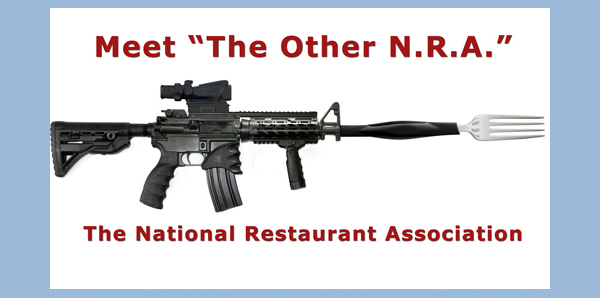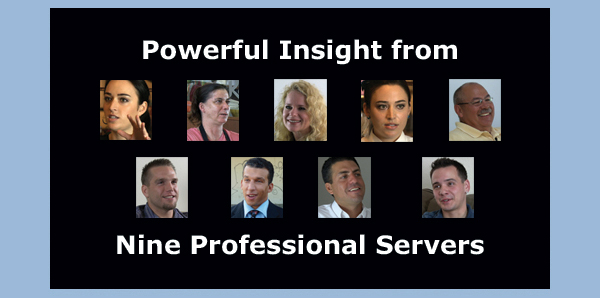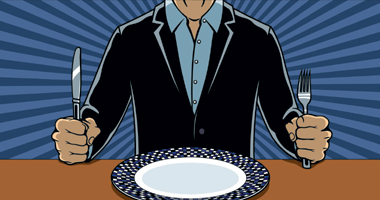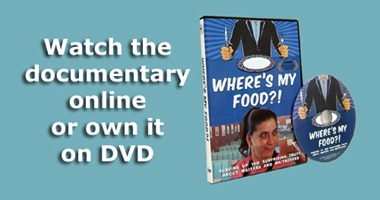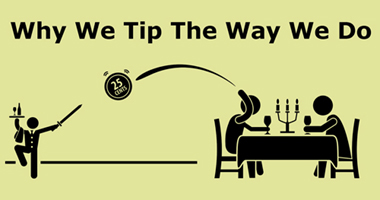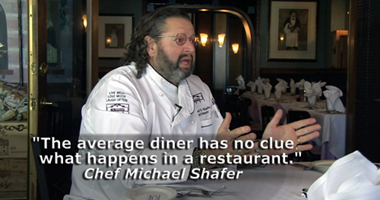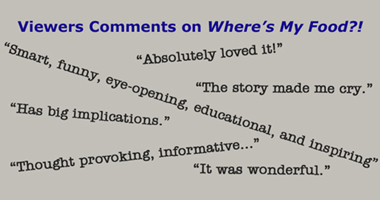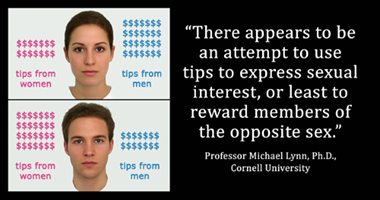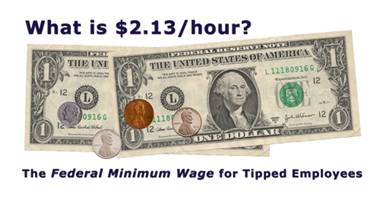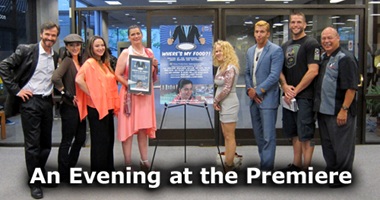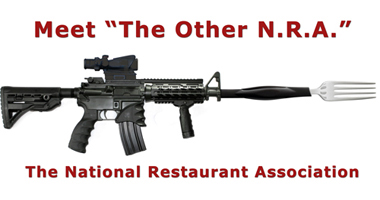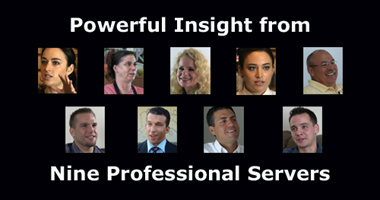Why and How We are Making This Film
The Genesis
 It's
been said that the primary purpose of a documentary is to shed light on a social
problem. John Grierson, the founding father of documentary films, wrote that
documentaries are, "... the creative treatment of actuality."
It's
been said that the primary purpose of a documentary is to shed light on a social
problem. John Grierson, the founding father of documentary films, wrote that
documentaries are, "... the creative treatment of actuality."
The idea for Where's My Food?! began as I listened to my two daughters recount details of their work as restaurant waitresses. Both were in their early 20s and in college at the time, working part-time to supplement their income.
They told me how male managers in their restaurants would sometimes touch them inappropriately, and make lewd suggestions. They showed me their minimum wage paychecks that were reduced to nearly zero dollars after tax deductions that estimated their tipped income. Their hands and arms were often marked by small cuts from knifes, and burns from hot plates. They would sometimes cry when telling me how a large table of customers expressed seemingly sincere thanks for delivering such excellent food and service, and then left the restaurant, leaving behind an insultingly low tip.
I began researching broader restaurant-related topics and questions. Who benefits from the tipping process? It's no secret that tipping keeps restaurant labor costs down, which in turn keeps menu prices low and passes along most of the responsibility of paying food servers to customers. But the full answer goes much deeper.
What type of person, I wondered, could serve food and beverage year after year, as a career? How did so-called "lifers" handle serious responsibilities such as family, bills and healthcare? How did they acquire the discipline required to go home with a pocket full of cash every night, to avoid myriad temptations, and to build a stable lifestyle similar to many salaried workers.
Drawing on my years of experience creating a variety of video, print and journalistic products, I considered approaching this topic as a documentary film...one that would be both socially significant and commercially viable.
Pre-Production Research and Planning
Some questions needed answers, so I researched. Had another film about the lives and struggles of professional food servers ever been made? No. Was that "topic gap" something that people want to see filled? Surveys I conducted indicated yes. Was the topic attractive to a wide audience that included both restaurant workers and restaurant customers? Again, yes. The final question I asked during this research period was, would enough people pay to see such documentary, to make it worthy of investing over two years of work and a significant amount of money? I took a deep breath and said (perhaps hopefully), yes.
The first step of the project plan was to rough out a budget that was sufficient to ensure excellent storytelling and high production values (including videography, lighting, audio, editing and post-production), plus marketing, legal and distribution expenses. I assembled a small team of trusted, experienced producers. The film's working title, Where’s My Food?!, was selected, and thankfully that domain name was available for a reasonable fee.
Although I've long admired the participatory-style docs made by Michael Moore and Morgan Spurlock, I instead chose the expository style of documentary filmmaking for Where's My Food?! That kept my face and my story out of the film, while enabling me to express multiple points of view, including my own. I built a list of rhetorical questions about the struggles facing food servers. Those questions would be answered through verbal commentary, i.e. interviews with servers and experts, along with narration to provide argumentative logic.
Finding and Interviewing Servers, Experts and the Restaurant-Going Public
 The
search began for waiters and waitresses who
represented a wide range of
backgrounds, incomes, struggles and goals. I needed willing
participants who spoke clearly and passionately about their
experiences, with no hidden agenda. (I shied away from the
quintessential struggling actor working in a restaurant.) I
placed ads online and in local
newspapers. Word of the search spread through server-focused blogs
and websites. The telephone started ringing and dozens of
servers told me their stories. Some of those "phone screens" led to face-to-face meetings
(usually at a Starbucks), and some of those meetings led
to filmed interviews. Not all of the filmed
interviews made it to the
final cut of the documentary.
The
search began for waiters and waitresses who
represented a wide range of
backgrounds, incomes, struggles and goals. I needed willing
participants who spoke clearly and passionately about their
experiences, with no hidden agenda. (I shied away from the
quintessential struggling actor working in a restaurant.) I
placed ads online and in local
newspapers. Word of the search spread through server-focused blogs
and websites. The telephone started ringing and dozens of
servers told me their stories. Some of those "phone screens" led to face-to-face meetings
(usually at a Starbucks), and some of those meetings led
to filmed interviews. Not all of the filmed
interviews made it to the
final cut of the documentary.
 I
found three experts who
represented different food service focus areas. All agreed
to be interviewed on camera. Professor Michael
Lynn, Ph.D., of Cornell University, is America's leading expert
on the psychological
and socioeconomic aspects of tipping. Michael Shafer is an executive chef and
owner of two well-run restaurants in the Los Angeles area.
And Saru Jayaraman is a lawyer, author and activist for the
rights of food service workers.
I
found three experts who
represented different food service focus areas. All agreed
to be interviewed on camera. Professor Michael
Lynn, Ph.D., of Cornell University, is America's leading expert
on the psychological
and socioeconomic aspects of tipping. Michael Shafer is an executive chef and
owner of two well-run restaurants in the Los Angeles area.
And Saru Jayaraman is a lawyer, author and activist for the
rights of food service workers.
 Interview subjects
were usually filmed in locations that were
personal for them. Two cameras were used for both tight and
wide shots, which facilitated edit cuts. Questions
were prepared (but not disclosed) in advance, however the best
conversations occurred organically. Raw footage was
reviewed, then each interview was transcribed, then editing
began.
B-roll was shot or acquired and added to the editing mix, to
help tell the story.
Interview subjects
were usually filmed in locations that were
personal for them. Two cameras were used for both tight and
wide shots, which facilitated edit cuts. Questions
were prepared (but not disclosed) in advance, however the best
conversations occurred organically. Raw footage was
reviewed, then each interview was transcribed, then editing
began.
B-roll was shot or acquired and added to the editing mix, to
help tell the story.
With a film crew and several PA "wranglers" we spent a day shooting person-on-the-street interviews in Los Angeles. Our goal was to capture the opinions and assumptions that frequent restaurant customers have about food servers and tipping practices. Some of what we captured on camera was heartwarming. Some of it, shocking.
Putting the Story Together
 My
goal for Where's My Food?! was to foster a greater
restaurant customer awareness of what happens in our own
minds, and what happens behind the scenes, when money is exchanged for ready-to-eat food
in a table-service restaurant.
My
goal for Where's My Food?! was to foster a greater
restaurant customer awareness of what happens in our own
minds, and what happens behind the scenes, when money is exchanged for ready-to-eat food
in a table-service restaurant.
Framing that goal was the humanity, the ego and the frailty shared by customers and food servers. Conveying such commonality required exposing facts and emotions that some may characterize as "outside the bell curve" aspects of the profession, such as waiter Chuck, who is poor and lives in his car. I tried to paint a full and inclusive canvas, including workers who derive significant self-worth from serving their regular customers, those who want to leave the profession but can't seem to, those who were born into the job by their parents, and those struggling with healthcare or addiction problems hidden from their customers.
Filming, Technology and Editing
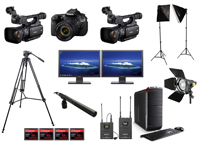 Most of the footage
was captured on a pair of Canon XF100 HD video cameras, using Sony and
Sennheiser lavaliere mics. Additional footage
came from Canon 7D and 60D DSLRs, a Panasonic HMC150 and a Canon HV40. Editing
was done using Sony Vegas Pro 12 software on a specially-configured Gateway
editing workstation. Please read my
director's notebook page for detailed
information on how I used these various technologies.
Most of the footage
was captured on a pair of Canon XF100 HD video cameras, using Sony and
Sennheiser lavaliere mics. Additional footage
came from Canon 7D and 60D DSLRs, a Panasonic HMC150 and a Canon HV40. Editing
was done using Sony Vegas Pro 12 software on a specially-configured Gateway
editing workstation. Please read my
director's notebook page for detailed
information on how I used these various technologies.
Next Steps
A reverse-chronological account of the film's progress can be read here.
